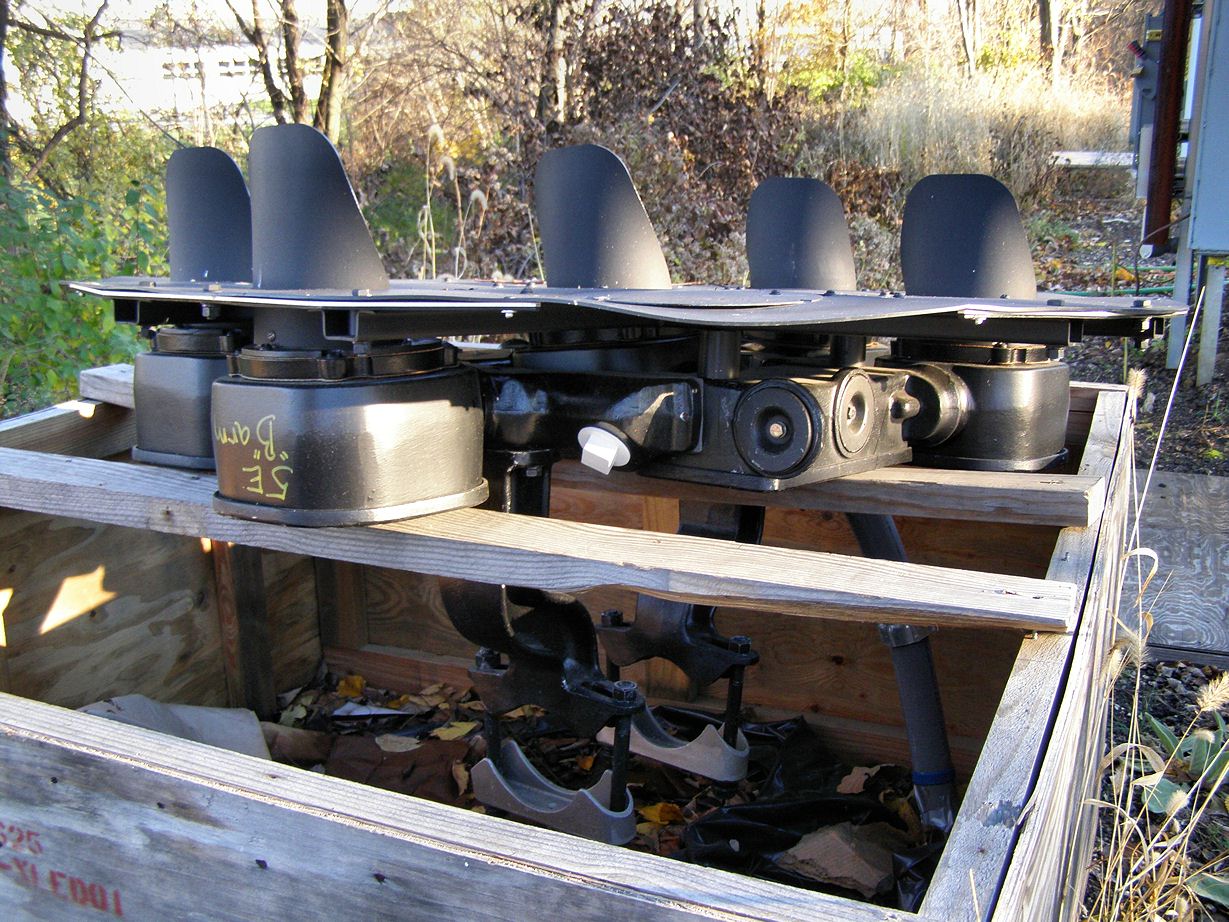In 2004 the C287 automatic has already been replaced by a Conrail style color light. This has taken place early in the NS era when the Harrisburg area signal shop was still using US&S NR style color lights instead of Darth Vader tombstone signals. C287 is shown here displaying Approach for a stop at CP-HARBOR. This pair of split signal masts were ultimately replaced by a single bi-directional mast after the NS resignaling project.
The lower head is not for diverging movements at CP-HARBOR, which if you recall were Restricted speed, but for the short block length between CP-HARBOR and CP-WEST HARBOR. The new signal was still outfitted with an 'SP' plate just like its predecessor, but was not given a coat of black paint on the upper half of the mast in the Conrail style.
CP-McCALLS is one of the few Conrail interlocking names that contains a lower case letter in the name. Like I said it is located at the east end of a long, 4 mile, signaled siding. This contrasts with the two short restricted speed sidings at Pilot and Harbor. Here we see the interlocking and the eastbound 246L signal.
CP-McCALLS features a medium speed diverging route and as such features a full PRR PL mast signal with a lower head containing both | and / positions for Medium Clear and Medium Approach. Stop and Proceed is displayed using the central marker in place of a Restricting \. This economic "style" would later be adopted by Amtrak. Because CP-HOLTWOOD is back-to-back with CP-McCALLS the lower head | was also used for Approach Medium.
CP-McCALLS featured an old school PRR remote interlocking relay hut. Until its resignaling in 2009 this section utilized the US&S 504 code system delivered via the high density plastic wrapped telecom cables. The relay hut is constructed from sheets of galvanized steel on a concrete base. This hut survived the re-signaling with the new relay box placed on the river side of the tracks (that floods frequently...). The #245 switch machine is a US&S M23 dual control electric model.
Here is the westbound catenary style position light signal gantry with the 246RB (siding) and 246RA (main) signals.
No surprises here. Siding signal has a lower head for diverging movements and the main signal has a "hanger" type marker light for call-on movements. The signals would not get any new paint before they were replaced by an NS cantilever mast at the same location.
CP-HOLTWOOD was located adjacent to the Holtwood Dam, which back in the day was paired with a decidedly less "green" coal fired power station that required shipments of coal via rail. CP-HOLTWOOD featured a single "trailing" crossover that partly split the long controlled siding into two halves. Here is the southbound catenary style signal gantry with two PRR PL signals. The 242L signal on the main track features an old style lower head with the backing applied only to the | indication for Medium Clear. The Medium Approach / was not provided a backing as it was originally displayed Slow Approach before the 1956 addition of Medium Approach. Like CP-McCALLS both the 242L and 238L use a lower head central marker light for Stop and Proceed indications, instead of a Restricting \.
'SP' plates make another appearance on both the 238L and 242L signals.
.JPG)
Here is a reverse view of the eastbound signal gantry taken in the fall of 2007. The signal bridge looks a bit like a hack, but it was in place as far back as the 1980's.

.JPG)
.JPG)
.JPG)
.JPG)
.JPG)
.JPG)
.JPG)
.JPG)
.JPG)


















